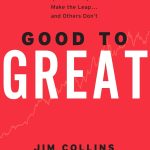
Customers say
Customers find the book well-researched and engaging, with one review noting how it nicely blends interesting anecdotes with research data. Moreover, the book is written in an entertaining manner and customers consider it worth every penny, particularly for value investors. Additionally, they appreciate its focus on successful givers and the message that doing good can lead to success. However, the story length receives mixed reactions, with some finding it detailed while others find it repetitive.
Make It Yours – See Your Price On Amazon!
Your Sales Price $18.00 - $8.96
A quick rundown of this product’s key features:
A groundbreaking look at why our interactions with others hold the key to success, from the bestselling author of Originals
For generations, we have focused on the individual drivers of success: passion, hard work, talent, and luck. But in today’s dramatically reconfigured world, success is increasingly dependent on how we interact with others. In Give and Take, Adam Grant, an award-winning researcher and Wharton’s highest-rated professor, examines the surprising forces that shape why some people rise to the top of the success ladder while others sink to the bottom. Praised by social scientists, business theorists, and corporate leaders, Give and Take opens up an approach to work, interactions, and productivity that is nothing short of revolutionary.
Our Top Reviews
Reviewer: J. F. Malcolm
Rating: 5.0 out of 5 stars
Title: Best book I’ve read so far this year
Review: Although 2013 is still young, I predict that Give and Take, by Wharton professor Adam Grant, has a great chance of being the best book I’ve read all year, for three reasons: it’s inspirational, it’s instructional, and it’s solidly research-based.The premise of the book is quite simple: the world comprises three types of people: givers, takers and matchers. Which type tends to be most successful? Although we’ve all been raised on the homily that it’s better to give than to receive, the bad news is that the left side of most bell curves is populated by givers, those who contribute more to others than they expect in return. Quite simply, they do less for themselves, people take advantage of them, and they are prone to burnout.But the real surprise is that the right side of bell curves is also a givers’ neighborhood. Combining extensive research with inspiring examples, Grant shows us how and why successful givers do well for themselves at the same time that they contribute so much to others. Successful givers approach four principal aspects of relationships differently. The four aspects are networking, collaborating, developing talent and communicating.Successful givers are excellent networkers, but so are a lot of takers and matchers. The difference is that successful givers proactively do things without expectation of return, creating goodwill and possibly setting an example that may be contagious. One of the excellent tips in this chapter is the suggestion to revive dormant connections. The benefit is that when most people tap into their network for help, their strong ties are trusting and disposed to help, but their weak ties have more diverse information. People you haven’t talked to in a long time combine the assets of strong ties and weak ties.Givers are also excellent collaborators, quick to help others in a team environment and without spending too much time worrying about who gets credit. They tend to demonstrate what the National Outdoor Leadership School calls expedition behavior, putting the needs of the mission and the team ahead of your own. In the long run, this behavior increases their prestige and the willingness of others to help them when they need it.Givers are also excellent at spotting talent, because they’re not worried about creating rivals who may outshine them. Also, because they tend to assume competence and talent on the part of others, they may be generating self-fulfilling prophecies. I found this chapter to be rather long on anecdote and thin on evidence, but the next chapter made up for it.For me the meatiest chapter covered the successful practices that givers follow in communicating with others, in presenting, selling, and negotiating. Successful givers ask more meaningful questions and have an effective mix of confidence and humility in their advocacy. They also tend to be good at perspective-taking, which is the cognitive equivalent of empathy: instead of feeling what the other person is feeling, they are adept at thinking what they’re thinking. In studies, people with high empathy do worse in creating value, because they are more apt to give the other person what they want. Those high in perspective taking are better at coming up with creative ideas to give both sides more of what they want.The second section of the book is for those who are too giving, and tend to fall at the bottom of the success distribution because they get taken advantage of and exhaust their energies serving others rather than themselves. The key insight is that self-interest and other-interest are not opposite points on a single line; they are separate axes on a graph. Those who give too much have a high score for other-interest, and a low score for self-interest. Successful givers are at the top right of the graph, combining a high other-focus with high self-interest. As a result, they are in better control of their giving, seeing it as a positive choice rather than an obligation, and being more proactive in allocating their giving time and energy.If you get inspired by Grant’s book, what you’ll really want to know is how to become a more successful giver. The Catch-22 is that giving has to be sincere it it’s to work, and if you try to make it strategic it’s not sincere. I do think, however, that if you begin changing your behavior for strategic purposes, and start doing more for others, two positive things may happen. First, regardless of the motive, you’re contributing to the sum total of benefit and happiness. Even more important is that your attitude may begin to catch up with your actions. The mind does not like cognitive dissonance, so if we’re acting in a giving manner we will begin to see ourselves more as givers, leading to a virtuous circle. The book finishes with ten suggestions for becoming more of a giver–I’ll keep you posted on how it works.The one weakness in the book is that in some of the chapters, as mentioned above, there was less evidence than it seemed on first reading. You get pulled in to the inspiring stories, but on closer reading you don’t find enough evidence to be able to make up your mind whether those examples are the rule or the exception.Despite this, the message in Grant’s book is so powerful that I give it five stars. But it’s not a gift–it’s truly earned. The book itself is a gift to anyone who reads it, and to countless others who may be on the receiving end of their stepped-up giving.Disclaimer: I may be subject to some confirmation bias, because although I don’t know Adam Grant personally, I found out about the book through the very complimentary article profiling him in the New York Times Magazine. (Of course, that’s one way highly successful givers work their magic..)
Reviewer: Wally Bock
Rating: 5.0 out of 5 stars
Title: How to succeed by being a giver who does it right
Review: In the opening pages of Give and Take: Why Helping Others Drives Our Success, Adam Grant says:“Every time we interact with another person at work, we have a choice to make: do we try to claim as much value as we can, or contribute value without worrying about what we receive in return?”Then Grant defines three characteristic ways of dealing with that choice. “Takers” try to get as much value as they can. They want to come out on top. They want to win. “Givers” are their polar opposite. Givers try to give as much as they can without worrying about what they get back.According to Grant, both of those styles are rare and at opposite ends of a continuum. In the middle are what he calls “Matchers.” Matchers worry about a fair exchange. They’re willing to help others, but they also try to protect themselves, and many of their transactions come out even. Which type is most likely to succeed? Here’s Grant:“Across occupations, it appears that givers are just too caring, too trusting, and too willing to sacrifice their own interests for the benefit of others. There’s even evidence that compared with takers, on average, givers earn 14 percent less money, have twice the risk of becoming victims of crimes, and are judged as 22 percent less powerful and dominant.”Wow. I’ve always thought of myself as a giver. My instinct is to say “Yes” when somebody asks me for something, without worrying too much about what’s in it for me. In fact, one of the hardest things I had to learn during my lifetime was that if I wanted to be successful, I needed to say “No” a lot more. I’ve been taken advantage of many times in my life because of that giving nature. I figured that was okay, though, because I couldn’t see myself really acting like either a taker or a matcher.Grant’s statement made me stop and think. The bottom of the pile? I had to stop reading for a while and process what I read. It took a while and a bunch of soul searching, but I finally realized that I was okay with that. If that had to be the cost, then that was the cost. Besides, I thought I’d done pretty well in my life. When I returned to the book, here’s the next thing I read.“So if givers are most likely to land at the bottom of the success ladder, who’s at the top—takers or matchers? Neither. When I took another look at the data, I discovered a surprising pattern: It’s the givers again.”When Grant outlined the things about the differences between the givers at the top and bottom of the career achievement heap, they matched up well with my life experience. One of the neat things about being 72 is that you’ve got a lot to look back on, and what I realized was that my giver behavior was very different today than it was 50 years ago.As I went through the book, I discovered that most of the strategies that Grant talks about to make givers more successful and productive were things that I had learned over my lifetime. It took longer that way. Plus, learning from experience is much more painful than learning from reading. But what’s in Give and Take matches up with my life experience and is supported by an awful lot of evidence.I will admit, that as a writing coach, I wanted to applaud Grant for the way he handled that revelation. It was an absolutely masterful bit of writing.Masterful writing’s characteristic of Adam Grant’s books and Give and Take is no exception. He tells you what you’ll find in the different chapters, and then supports his points with both story/examples and research. The examples are good, and the research is solid and wide-ranging.Whether you decide to change your behavior and become more of a giver or not, you’ll still learn a lot from this book. It’s a good read with good lessons. Grant summarizes many of those lessons in a final chapter called “Actions for Impact.” That chapter has 10 suggestions for specific things that you can do based on what you’ve learned in the book. It is a solid, practical chapter, and gives you a way to experiment with some ideas you might have gotten in the earlier pages.In A NutshellIn Give and Take: Why Helping Others Drives Our Success, Adam Grant reveals that a life strategy of being a giver as opposed to a taker or a matcher can work for you, but only if you do it in a sensible and intentional way. The book is filled with great examples and the points are supported with research.
Reviewer: Samuel Adebowale
Rating: 5.0 out of 5 stars
Title:
Review: I learnt a lot about myself and many people around me from reading this book. I also picked up essential lessons for optimising my approach to supporting colleagues, friends and family in various endeavours where I have generally considered giving some form of support.
Reviewer: GP
Rating: 5.0 out of 5 stars
Title:
Review: Adam Grant is a masterful writer that is able to engage, educate and inspire. His genuine enthusiasm shines through and writing style is very similar to his podcast making his books easy to read. The analysis of Givers, Takers and Matchers and how they fare as individuals across various industries and situations is insightful. Grant’s approach of integrating his own experience, research, case studies, anecdotes, urban myths and studies from history provides a very rounded view and gently reinforces the learnings in the book. It will make you wonder if you really are a giver, and if you’re not, you might find yourself being a little more inclined to give in the future. As a business and leadership coach I found the book an excellent reference and have applied many learnings into my programs. In a world where the self absorbed “winner takes all” attitude is far too prevalent, it is comforting to know that givers can be winners.
Reviewer: Amazon Customer
Rating: 3.0 out of 5 stars
Title:
Review: Book provides a fresh perspective on how to manage relationships in this connected world. And gives some startling examples.However the content is bit more stretched than needed.
Reviewer: garris
Rating: 5.0 out of 5 stars
Title:
Review: Llego en muy buenas condiciones.
Reviewer: Cristina Danila
Rating: 4.0 out of 5 stars
Title:
Review: A real fun book in whic you learn about givers takers and matchers. Once you read this book, you see the poepl around with different eyes and you seek in them all the traits of one of the three. I think its a great guide of improvibg yourself, in becoming a genuine giver..
Price effective as of Apr 08, 2025 13:50:12 UTC
As an Amazon Associate Dealors may receive a commission for purchases made through these links.









